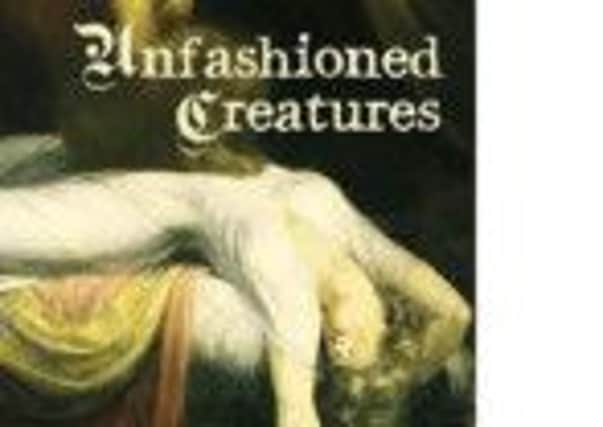Book review: Unfashioned Creatures, Lesley McDowell


UNFASHIONED CREATURES
LESLEY McDOWELL
Saraband, 290pp, £8.99
The psychological mystery at its heart is sparked by a letter Mary Shelley wrote in 1823, in which she tells of her re-acquaintance with a childhood friend who had been “ill a long time, even disturbed in her reason”. She sets out to give that friend, Isabella Booth, a credible back story.
Isabella gives her own version of how events turned out in the year of Mary’s letter – the abusive older husband, a writer and intellectual, whose bouts of insanity seem to be infecting her own mind; the young psychiatrist at an asylum in Montrose with whom she believes she has found an escape. The psychiatrist, a fictional character, has a different perspective on their dealings. As the alternating narrative unfolds, he reveals himself morally untethered, a man with his own disturbed past and an ambition to develop a particular theory of insanity that will make his name.
Advertisement
Hide AdUnfashioned Creatures – the title comes from Mary Shelley’s Frankenstein – neatly captures the fevered menace of later 19th-century classics such as Wuthering Heights or indeed Frankenstein itself, along with the era’s fascination with the supernatural. Isabella sees ghosts – chiefly that of the dead sister whose widower she married, breaking a Biblical and legal taboo. The ghostly encounters are quietly chilling, and it’s some compliment to McDowell that she succeeds so well in sweeping the modern reader into her world of pre-Victorian murk and superstition. Are these visitations more real than the hallucinations of a distressed and drugged-up mind? You almost believe it.
But then you have to rethink. McDowell has devised not one but two unreliable narrators. The technique can become tiresome in the wrong hands; but it works here, as different versions of reality heap up on each other and ratchet up the tension. There are moments when we wonder if Isabella’s husband is actually perfectly sane. And how disturbed is her own reason; how tenuous, young doctor Alexander Balfour’s grasp on reality? As a psychological whodunit – or whydunit – Unfashioned Creatures keeps up the pressure, even beyond the final page.
The novel has bigger ambitions, however. It puts early musings on identity and the self, alongside wider questions of gender, under the spotlight. In early 19th-century Britain the notion of the female as the weaker sex, prone to hysteria and insanity, is ripe for intellectual probing. Isabella reads widely as she considers the matter, eventually (if we believe her story) discovering her own strength and finding a new faith in self-determination. Today, the concept of mental illness as a predominantly female problem has lost its force, but has the notion of “the weaker sex” really disappeared? The question still resonates.
Some liberties are taken with chronology and historical fact, although people and episodes from the fledging psychiatric world – much of it taking shape at the Royal College of Physicians in Edinburgh – enliven the narrative. Edinburgh medical graduate, John Conolly, assumes a substantial role. He went on to pioneer restraint-free treatment of the insane in Britain while superintendent of an asylum in west London, but that was later in the century. Here, we find Dr Balfour experimenting with the idea in 1823, having spent a year at Gheel, a pioneering establishment on the continent. Such minor manipulations of fact are essential for the story – otherwise there would be no opportunity for Isabella and her doctor to form the relationship that prompts the later action – and McDowell, in an end note, is unapologetic.
Unfashioned Creatures is a finely worked and confident flight of Gothic fancy that stands up well to scrutiny in our cynical, self-analytical age. McDowell’s ear for dialogue is already finely tuned, and her handling of the contrasting narratives deftly judged. At times the complexities of plot and character, of reality and unreality, and questions of good and evil, fact and fiction, threaten to overwhelm. But at the level of plot, the fundamental question – is Isabella really mad, and if so, what exactly is insanity? – drives the story on towards the open door that marks its ending. Which is another way of saying it’s a tantalising read.